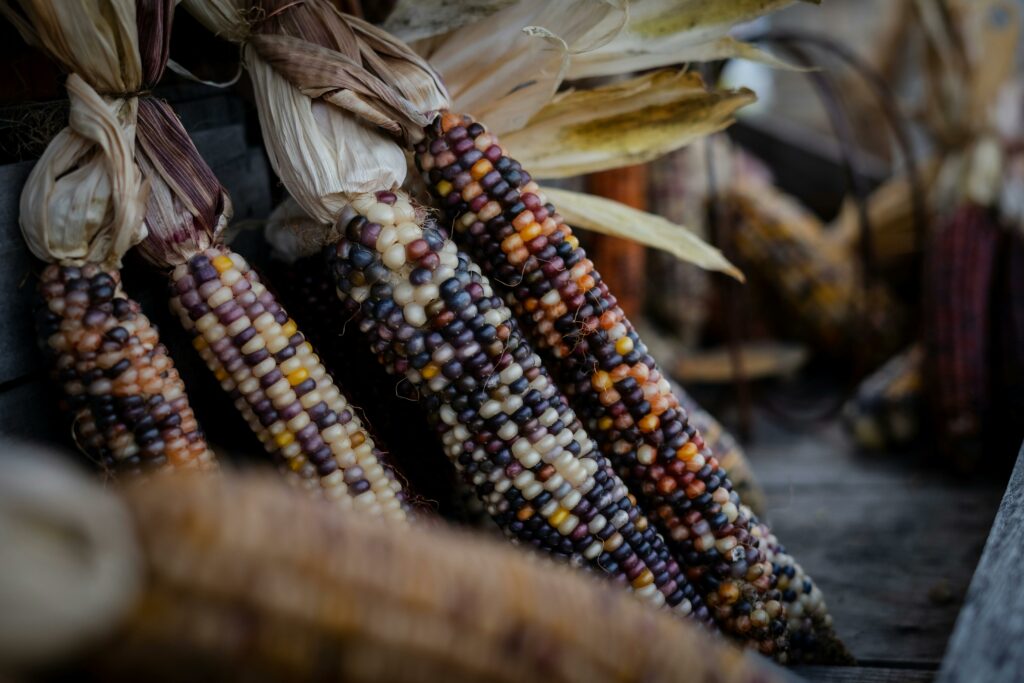Vocabulary about genetics
Homework to do : Learn very well this vocabulary and begin to learn how you have to pronounce it.
Adaptation = a new and beneficial trait. Adaptations increase the ability of an organism to survive in its environment and produce offspring. Adaptations (new beneficial traits) arise from spontaneous mutations. Creatures don’t choose to change!
Allele = alternative forms of a gene for each variation of a trait of an organism
Amino acids = there are 21 different kinds of amino acids that make protein. (bricks) The sub-units that join together to make proteins.
Chromosomes = 46 are found in human cells. Genes are carried among chromosomes.
Codon = A sequence of 3 letters on MRNA that code for amino acids. A codon can also tell when to start and stop translation.
Crossing over = exchange of genetic material between non-sister chromatids from homologous chromosome during prophase I of meiosis; results in new allele combinations
Cytoplasm = The part of the cell that lies outside of the nucleus.
Deletion = In genetics, a deletion (also called gene deletion, deficiency, or deletion mutation) (sign: Δ) is a mutation (a genetic aberration) in which a part of a chromosome or a sequence of DNA is left out during DNA replication. Any number of nucleotides can be deleted, from a single base to an entire piece of chromosome.
Diploid = cell with two of each kind of chromosome; is said to contain a diploid, or 2n, number of chromosomes
Duplication = The act or process of duplicating or repeating a region in the genetic material or chromosome, as in gene duplication and chromosomal duplication.
DNA = The main instructions that explain how to build the body. (Deoxyribose Nucleic Acid) DNA makes up alleles, genes and chromosomes.
Dominant = observed trait of an organism that mask the recessive form of a trait
Egg = haploid female sex cell produced by meiosis
Enzyme = A type of protein that controls the rate of a biochemical reaction.
Evolution = any process of change over time. Evolution is a change in the traits of living organisms over generations, including the emergence of new species. Since the development of modern genetics in the 1940s, evolution has been defined more specifically as a change in the frequency of alleles in a population from one generation to the next. Evolution is change in the heritable traits of a population over many generations.
Fertilization = fusion of male and female gametes
Gamete = male and female sex cells, sperm and eggs
Gene = Every trait is controlled by a gene. A human has 25,000 genes. Genes are controlled by 2 factors called “alleles”. Each allele comes from a parent. A gene is a portion of the DNA molecule which codes for a protein.
Genetic recombination = major source of genetic variation among organisms caused by re-assortment or crossing over during meiosis
Genetics = branch of biology that studies heredity
Genotype combination of genes in an organism
Germ Cell– An egg or sperm cell. A gamete. In humans, a germ cell contains 23 chromosomes.
Haploid = cell with one of each kind of chromosome; is said to contain a haploid or n, number of chromosomes.
Heredity = passing on of characteristics from parents to offspring
Heterozygous = when there are two different alleles for a trait
Homologous chromosome = paired chromosomes with genes fro the same traits arranged in the same order.
Homozygous = when there are two identical alleles for a trait
Hybrid = offspring formed by parents having different forms of a specific trait.
Insertion = In genetics, an insertion (also called an insertion mutation) is the addition of one or more nucleotide base pairs into a DNA sequence.
Inversion = An inversion is a chromosome rearrangement in which a segment of a chromosome is reversed end to end. An inversion occurs when a single chromosome undergoes breakage and rearrangement within itself.
Law of segregation = Mendelian principal explaining that because each plant has two different alleles, it can produce two different types of gametes. During fertilization, male and female gametes randomly pair to produce four combinations of alleles
Meiosis = type of cell division where one body cell produces for gametes, each containing half the number of chromosomes in a parent’s body.
Mitosis = the kind of cell division that splits an original cell into 2 identical daughter cells. Mitosis causes you to grow. Mitosis replaces old cells. Interphase is the resting phase. Prophase starts the process. The chromosomes and their copies line up at Metaphase. During Anaphase the chromosomal copies are separated. In telophase the chromosomes are very far apart. Cytokinesis forms two new cells.
MRNA = This type of RNA matches with DNA and then moves to the ribosome. Messenger ribonucleic acid. MRNA is transcribed from DNA and carries the instructions about how to make a protein to the ribosome.
Mutation = A change in the DNA instructions. A change in the DNA sequence. The change can be beneficial, detrimental or neutral. It ultimately results in a change in protein. For instance, random genetic mutation gave rise to the dark phenotype of the peppered moth.
Natural Selection = Darwin said that the process that eliminates creatures with inferior traits and preserves those with superior traits is known as natural selection. Critters with good traits will be selected by nature to survive. Those organisms that survive are more likely to produce offspring with the same advantages for survival thus increasing the population of the organism. Critters with negative traits will die off.
Non-disjonction = (In mitosis) The failure of sister chromatids to separate during and after mitosis. (In meiosis) The failure of homologous chromosomes to segregate or to separate during and after meiosis.
Nucleotide = One of the four DNA chemical submits: (A + sugar and phosphate), (T + sugar and phosphate), (G + sugar and phosphate), (C + sugar and phosphate). 3 billion nucleotides make up a human’s genetic code.
Phenotype = outward appearance of an organism, regardless of its genes.
Protein = Skin, antibodies, muscle, hormones, are examples of protein (finished product) A long chain of amino acids. Enzymes, pigments etc…
Recessive = trait of an organism that can be masked by the dominant form of a trait
Ribosome = this is where MRNA matches with TRNA and construction occurs. The site of protein construction. Ribosomes move along the MRNA as it is translated into protein.
Sexual reproduction = pattern of reproduction that involves the production of subsequent fusion of haploid cells.
Sicle cell : Sickle cell disease is a group of disorders that affects hemoglobin, the molecule in red blood cells that delivers oxygen to cells throughout the body. People with this disorder have atypical hemoglobin molecules called hemoglobin S, which can distort red blood cells into a sickle, or crescent, shape.
Sperm = haploid male sex cells produced by meiosis
Substitution : A substitution is a mutation that exchanges one base for another (i.e., a change in a single « chemical letter » such as switching an A to a G).
Trait = characteristic that is inherited; can be either dominant or recessive
Transcription = The process of copying DNA into mRNA
Translation = The process of converting mRNA into protein.
Variation = in any population of critters, some are different from the others. Variety! In a population, critters are different – due to mutations.
Zygote = diploid cell formed when a sperm fertilizes an egg.


